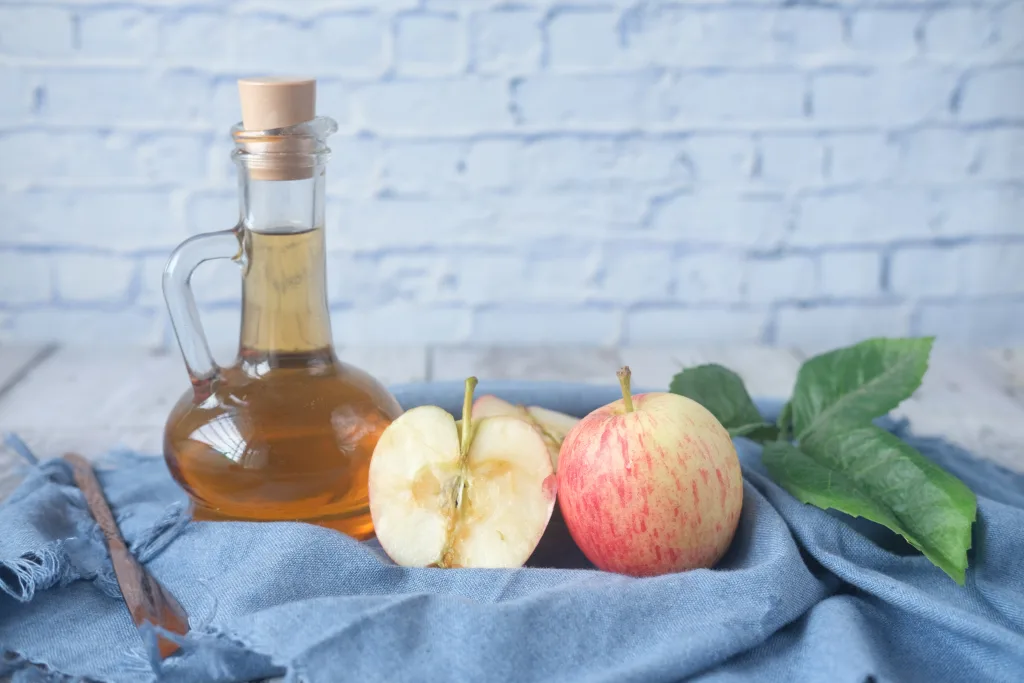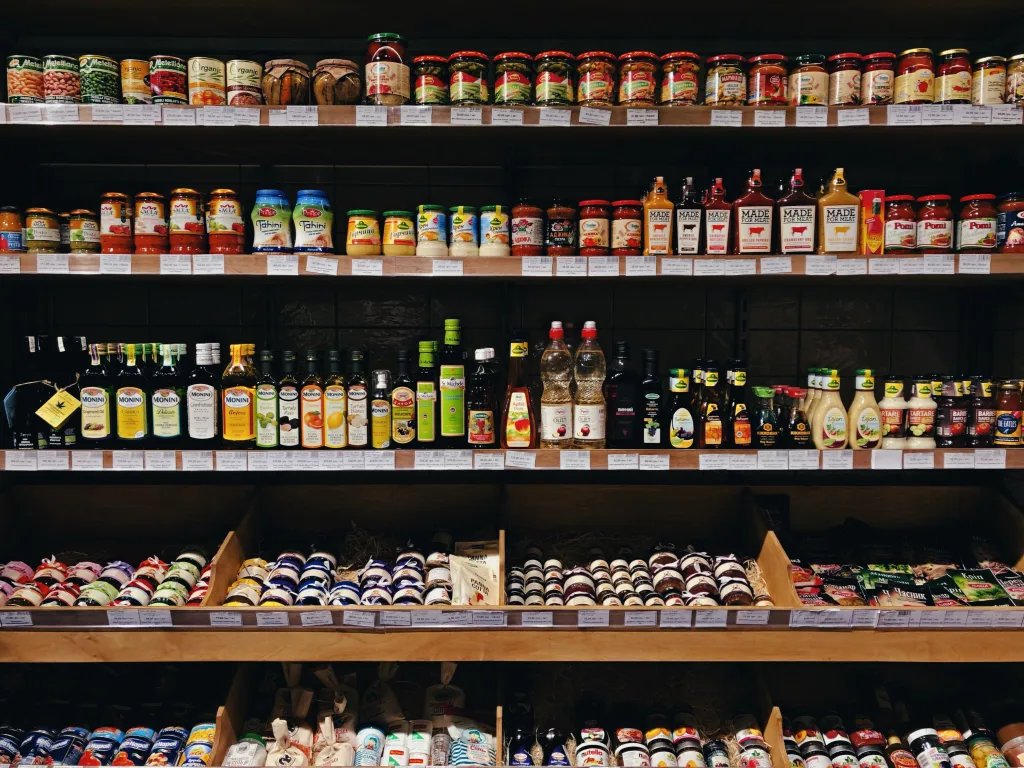Vinegar is a versatile and widely used product that adds a tangy flavor to various culinary dishes. But have you ever wondered where vinegar comes from and how it is made? In this article, we will explore the origins of vinegar and the process behind its production.
Vinegar is essentially a liquid that contains acetic acid as its active substance. Acetic acid can be obtained from different sources, and the type of vinegar can vary depending on its origin. Natural vinegar is derived from organic sources, while synthetic vinegar is produced from fossil fuels.
The most common method of making vinegar involves fermenting alcohol, specifically ethanol, with acetic acid bacteria. This fermentation process results in a liquid that is practically non-alcoholic but rich in acetic acid, which gives vinegar its distinctive sour taste.
Traditionally, vinegar was made from wine, hence the term “vinegar,” which comes from the French words vin (wine) and aigre (sour). In this method, wine was exposed to air and allowed to naturally ferment with the help of acetic acid bacteria present in the environment. Over time, the alcohol in the wine would convert into acetic acid, transforming the wine into vinegar.
However, today, the majority of white vinegar, the purest form of distilled vinegar, is produced through the fermentation of grain alcohol or ethanol. This type of alcohol is not naturally rich in nutrients necessary for fermentation, so additional ingredients like yeast or phosphates may be added to kickstart the bacterial fermentation process.
The resulting liquid is then subjected to a distillation process to purify it further. White vinegar typically has a high acidity level, around ten percent, making it an excellent non-toxic cleaning agent and a popular choice for pickling fruits and vegetables.
One of the advantages of white vinegar is its neutral flavor, which makes it suitable for various culinary applications. It can be used in salad dressings, marinades, and sauces without overpowering the other ingredients. Its acidity also helps to enhance flavors and preserve food.
While white vinegar is the most commonly used type, there are various other types of vinegar available, each with its own unique flavor profile and production method. For instance, apple cider vinegar is made from fermented apple juice, while balsamic vinegar is produced from grape must, the freshly crushed juice including the skins, seeds, and stems.
Vinegar is made by fermenting alcohol with acetic acid bacteria. Most white vinegar today is produced from the fermentation of grain alcohol, which is then distilled to obtain a pure and highly acidic form of vinegar. Its neutral flavor and high acidity make it suitable for cleaning purposes, pickling, and a variety of culinary applications. So, the next time you reach for that bottle of vinegar, you’ll have a better understanding of its origins and how it came to be a staple in our kitchens.
Is Vinegar Man Made Or Natural?
Vinegar can be both man-made and natural, depending on its production process. Here is a detailed explanation:
1. Natural Vinegar:
– Natural vinegar is derived from organic sources such as fruits, grains, or other plant-based materials.
– The most common type of natural vinegar is made from fermented alcoholic liquids, such as wine or cider.
– During the fermentation process, bacteria called Acetobacter convert the alcohol into acetic acid, which gives vinegar its characteristic sour taste.
– Natural vinegar can also be made from other sources like coconut water, honey, or malt.
2. Man-made Vinegar (Synthetic or White Vinegar):
– Synthetic vinegar, also known as white vinegar, is produced from synthetic acetic acid, which is derived from fossil fuels such as petroleum.
– It is a cost-effective alternative to natural vinegar and is widely used in various industries.
– Synthetic vinegar undergoes a chemical process where acetic acid is obtained from methanol or ethylene.
– This synthetic acetic acid is then diluted with water to produce vinegar with the desired acidity level.
Key Points:
– Natural vinegar is derived from organic sources like fruits, grains, or plant-based materials.
– It is produced through a fermentation process where alcohol is converted into acetic acid by bacteria.
– Synthetic vinegar, or white vinegar, is made from synthetic acetic acid derived from fossil fuels.
– Synthetic vinegar is a cost-effective alternative and undergoes a chemical process using methanol or ethylene.
Vinegar can be both natural, obtained from organic sources through fermentation, or man-made, produced from synthetic acetic acid derived from fossil fuels.

How Do We Get Vinegar?
Vinegar is obtained through a process called fermentation. Here are the steps involved in obtaining vinegar:
1. First, a source of alcohol is needed. This can come from various sources such as wine, cider, or fermented fruit juices. The alcohol content should be around 5-20%.
2. Next, the alcohol is exposed to acetic acid bacteria, also known as acetobacter. These bacteria convert the alcohol into acetic acid through a process called oxidation. The bacteria require oxygen to carry out this conversion.
3. The alcohol and bacteria are combined in a vessel, typically a wooden barrel or a ceramic container, known as a vinegar mother. The vinegar mother contains a gelatinous substance that consists of cellulose and acetic acid bacteria. This acts as a starter culture for the fermentation process.
4. The mixture of alcohol and bacteria is left to ferment for a period of time, usually several weeks to several months. During this time, the bacteria consume the alcohol and produce acetic acid.
5. The fermentation process is influenced by various factors such as temperature, oxygen availability, and the type of alcohol used. These factors can affect the flavor and acidity of the vinegar.
6. Once the desired level of acidity is achieved, the vinegar is filtered to remove any sediment and bacteria. It is then ready for consumption or further processing.
7. Depending on the desired type of vinegar, additional steps may be taken. For example, if balsamic vinegar is desired, the fermented liquid may be aged in wooden barrels for a specific period of time to develop its characteristic flavor.
Vinegar is obtained through the fermentation of alcohol using acetic acid bacteria. The resulting liquid, containing acetic acid, is what gives vinegar its sour taste.
What Is White Vinegar Made From?
White vinegar is primarily made from the fermentation of grain alcohol, specifically ethanol. This type of alcohol is commonly derived from grains such as corn, wheat, or barley. During the fermentation process, bacteria convert the ethanol into acetic acid, which is the main component of vinegar.
To initiate the fermentation process, additional ingredients may be added to the ethanol. These can include yeast or phosphates, which act as catalysts to promote the growth of bacteria. The presence of these added ingredients helps kickstart the bacterial fermentation process and ensures a more efficient conversion of ethanol into acetic acid.
It’s worth noting that not all white vinegar is made using the same method. Different manufacturers may have their own unique processes or variations in the ingredients used. However, the use of grain alcohol fermentation is a common and widely employed method in the production of white vinegar.
White vinegar is primarily made from the fermentation of grain alcohol, with the aid of additional ingredients to facilitate the conversion of alcohol into acetic acid.
Is White Vinegar Really Vinegar?
White vinegar is indeed a type of vinegar. It is the purest form of distilled vinegar available and is typically made from fermented ethanol, which is a type of alcohol. During the fermentation process, acetic acid bacteria convert the ethanol into acetic acid, resulting in vinegar.
White vinegar gets its name from its clear and colorless appearance. It is also known as distilled vinegar because it is made through a distillation process, which helps remove impurities and create a higher acidity level. Typically, white vinegar has an acidity level of around ten percent, making it quite strong.
Due to its high acidity, white vinegar is commonly used as a cleaning agent. Its non-toxic nature makes it a popular choice for cleaning various surfaces in homes, such as countertops, windows, and bathroom fixtures. Additionally, white vinegar can be used as a natural fabric softener and deodorizer.
White vinegar is also a popular choice for pickling fruits and vegetables. Its high acidity helps preserve the food and adds a tangy flavor. It can be used to pickle cucumbers, onions, peppers, and many other types of produce.
In culinary applications, white vinegar is often used in salad dressings, marinades, and sauces. Its neutral flavor allows it to blend well with other ingredients without overpowering the dish. It can add a subtle tang and acidity to enhance the flavor of various recipes.
White vinegar is a type of vinegar that is made through a distillation process, resulting in a pure and colorless liquid. It is highly acidic and can be used for cleaning, pickling, and culinary purposes.

Conclusion
Vinegar is a versatile and widely used product that is obtained through the fermentation of alcohol with acetic acid bacteria. It can be made from both organic and synthetic sources, with natural vinegar being derived from organic substances and synthetic vinegar originating from fossil fuels. White vinegar, the purest distilled form of vinegar, is commonly produced from the fermentation of grain alcohol. It has a high acidity level and a neutral flavor, making it suitable for various applications such as cleaning, pickling, salad dressings, marinades, and sauces. With its sour taste and non-toxic properties, vinegar proves to be a valuable ingredient in both culinary and household settings.
